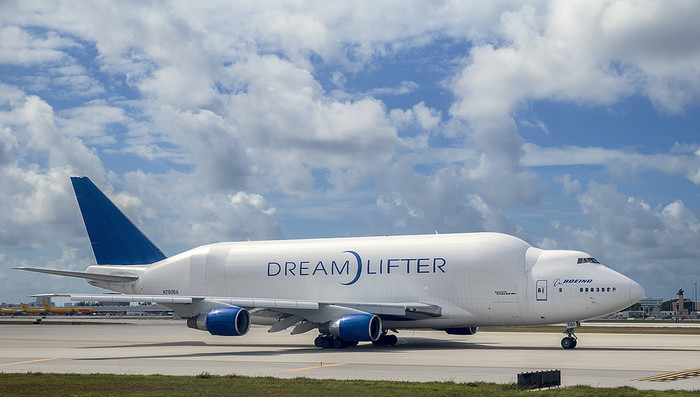
Image by USDA A GEnx engine undergoes testing -- this is the make of engine used on the 787 Dreamliner.
Update: Concerns are spreading.
In late July a Boeing 787 assembled in Charleston took off for a test flight and in its wake left mystery debris and fire near the Charleston International Airport runway -- a situation that lead to delays, diversion, and closure for two hours.
But the real concern lied in the engine failure, why and how did the GE-made engine failure happen? And was it a failure that might happen again?
The second question will have to wait, but now officials understand what the failure was: a fan "mid-shaft" on the GEnx engine fractured.
However that answer represents the begining of the end only for the first stage as investigators will now examine the assembly records of the engine as they seek out if the problem was specific to this engine or representative of more.
We'll keep you posted, but more details from a government release are below:
The National Transportation Safety Board continues its investigation of the July 28, 2012 contained engine failure that occurred on a Boeing 787 Dreamliner during a pre-delivery taxi test in Charleston, South Carolina. A contained engine failure is a specific engine design feature in which components might separate inside the engine but either remain within the engine's cases or exit the engine through the tail pipe. This design feature generally does not pose immediate safety risks.
Last week, the NTSB sent an investigator to the scene to gather information on the incident and subsequently launched a full investigation into the cause of the failure, led by NTSB Investigator-in-Charge, Mr. David Helson.
On August 1, 2012, a team of experts from the NTSB, FAA, Boeing and GE Aviation specializing in engine systems and metallurgy traveled to a GE facility in Cincinnati, OH to disassemble and examine the failed GEnx engine. GE is the manufacturer of the GEnx engine. The parties to the investigation have been extremely cooperative in assisting NTSB personnel in its review and assessment.
As a result of the investigative work to date, the NTSB has determined that a fan mid-shaft on the failed GEnx engine fractured at the forward end of the shaft, rear of the threads where the retaining nut is installed. The fan mid-shaft is undergoing several detailed examinations including dimensional and metallurgical inspections.
The GEnx engine is a newly designed aircraft engine. It is a "dual shaft" engine, meaning that one shaft connects the compressor spool at one end to the high pressure turbine spool at the other end. A longer "fan shaft" connects the fan and booster in the front of the engine to the low pressure turbine in the back.
The cockpit voice recorder and flight data recorder, which is a combined unit on the 787 Dreamliner, was transported to the agency's Recorders Laboratory in Washington, DC for processing and readout. Both recordings captured the event and analysis is ongoing.
Moving forward, investigators will continue the detailed examination of the engine and metallurgical analysis of its components. The investigators have also begun reviewing the engine manufacturing and assembly records.
This investigation is ongoing. The information released today is factual in nature and does not include any analysis. Additional factual information may be released as it is developed.

